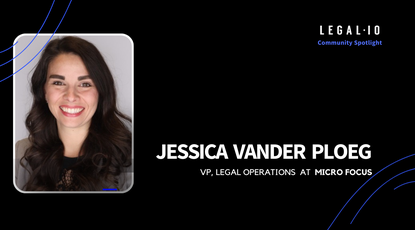In the past few years, the category of contract lifecycle management software has seen rapid growth and a tremendous amount of venture capital investment. Contract management is the process of managing contract creation, execution, storage and compliance with contractual obligations, and has become one of the key pillars of today's legal operations department.
When evaluating which solution to buy, legal departments and other business stakeholders must choose a solution that supports the often growing contracting needs of the organization while balancing the importance of having a system that is agile, adaptable and affords simplistic enterprise-wide adoption.
There's many considerations to account for when procuring a solution. This article provides an overview of questions that a potential buyer may want to consider asking vendors.
When running a more structured RFP process, these questions can be distributed in a spreadsheet, allowing for structured comparison of vendor responses. This freely downloadable CLM Business Requirements RFP Spreadsheet offers a good example and starting point that can be adapted to your specific needs:
In a format like this, it is easier to ask vendors to provide structured input, such as a score, for each question. In the above example, the scoring system is defined as follows:
- 0 - Functionality not provided: not included in the proposed system.
- 1 - Functionality provided; but requires customized integration with 3rd party: vendor has established relationship with business partner to provide this functionality, but it requires development/code customization by a 3rd party.
- 2 - Functionality provided by vendor, but requires code customization and/or further development: functionality can be accomplished with vendor’s product, but requires development/code customization. This category should also be used for functionality that is intended to be out-of-the-box but is still in development.
- 3 - Functionality provided seamlessly by 3rd-party product: The vendor has established a relationship (for example, as an OEM) with a business partner to provide this functionality, which is integrated directly with the CLM (e.g. plugin/add-on) and requires no development (i.e. is plug and play).
- 4 - Functionality provided out-of-the-box (possibly requires configuration of settings): The vendor provides the functionality from its own code base. No development or additional software is required.
These questions cover requirements for the buyer of an advanced contracts management system and can be narrowed down or expanded based on your priorities or requirements. Questions are categorized by section below:
0. Company information and pricing
Company Information
- Full Company Name
- Is Contracts Management the primary focus / product for your company? Aside from Contracts Management, does your company offer any other products / tools / services? Please explain.
- What are the top 3 goals your product is designed to deliver for customers?
- Have you previously worked with our company?
- Who are your top 3 competitors?
Team Composition
- What percentage of your engineering team are women?
- What percentage of your software engineering team is based full-time in the United States?
- How often does your team perform onsite visits?
Product Design & Ease of Use
- Describe your company’s approach to product design.
- Describe your company’s approach to product development and testing.
- Does your company offer opportunities to participate in beta features prior to rollout?
- How many training sessions are typically needed for users to learn how to use your product? (Average should be based on real experiences, not in theory)
Based on actual implementations done in the past year, how quickly after launch has it taken for users to begin using your product? - How are new features rolled out in your system? Please explain.
- "Please provide screenshots of: (a) Workflow screen (b) Approvals screen (c) Repository screen
Roadmap
- Provide a high level roadmap of product features you have already decided will be rolled out in the next 6-12 months. We do not expect your exploratory roadmap. Only roadmaps for decided, locked in feature enhancements.
Licensing and Pricing
- Explain license structure and what access/permissions are included with each type.
- Is your product available globally (today)? Is so, what countries and indicate any additional pricing structures for additional territories.
- We operate transparently with our customers and we expect the same from our providers. What is your pricing tiers and what does it include? (This information will only be shared with internal budget owners.)
- Do you have a SOC 2 Type II? If yes, please attach.
- Do you support SAML? (yes/no)
1. System
Administration
- [SYSTEM] - how are new features rolled out in your system?
Audit
- [SYSTEM] - automatically logs activity within the system, including changes associated with docs and text in documents; tasks (incl. approvals); requests; statuses; fields/metadata; records; clauses and templates; user actions and activity, etc. Logs indicate: what change was made, by whom and when and can be exported and reported upon.
- [SYSTEM] - data retention policies can be enforced via system settings for specific documents or document groups. Explain.
Mobile and UI
- [SYSTEM] - is mobile responsive? (Y or N)
- [SYSTEM] - supports all browsers. (Y / N, if no, list browsers supported)
- [SYSTEM] - confirm no degradation of features or capabilities when working on a mobile device. If limitation exist, please explain.
- [SYSTEM] - includes iOS and Android app availablility. If yes, what features exist within the app.
System Integrations
- [SYSTEM] - open API to connect with other platforms easily
- [SYSTEM] - has your Company specifically done API connections with any of the following platforms: Salesforce, Docusign, Workday, Oracle, JIRA, GSuite (including Gmail), ThinkSmart? Please specify as well as list all out-of-the-box integrations currently available.
- [SYSTEM] - confirm all functions are available and have seamless compatibility with MACs. (Y or N)
- [SYSTEM] - offers interoperability with MSWord and system of record.
Migration of Current & Legacy Contracts
- [USER ADMIN] - contract import is a standard feature and can be performed through system's user interface without technical support. (Y or N)
- [SYSTEM] - can contracts be uploaded in bulk and is there a volume threshold per upload? (Y or N, + number if volume threshold)
- [SYSTEM] - allows any third party or legacy contract to be uploaded/imported into the system. In what file format(s) can contracts be loaded into system? (Y or N; file formats)
2. Intake and Workflow
Request & Intake
- [ADMIN USERS] - can create a contract template / web form, including types of fields - dropdowns, free text, radio button, multiselect, calendar, required field designation, etc., to collect information from a requester, without requiring a technical resource (code/scripts etc.).
- [ALL USERS] - self-guided service via web form for business users to request contract creation.
- [SYSTEM] - allows contracts and records to auto populate with metadata input at various points in the request workflow e.g. if requester enters the vendor name on the request, it will update the vendor name on the record and within the contract created.
- [SYSTEM] - requests can be initiated via API connection from other business systems (e.g., Salesforce, JIRA, Thinksmart)
- [SYSTEM] - Filters for counterparties—sanctions screening, matching against company-provided lists, checks for duplicate/similiar counterparties
Workflow
- [ADMIN USERS] - can configure & update workflow matrix without technical resources (code/scripts).
- [ADMIN USERS] - can create an unlimited number of contract workflows without driving additional cost.
- [ADMIN USERS] - provide specific examples and typical timeframe to build one complex workflow without technical resources. [Do not use NDA workflow(s) as a reference as we do not consider NDA's complex.]
- [SYSTEM] - contract intake form(s) can leverage if-then logic to route according to entries in particular fields (e.g. if someone selects Partnership Agreement, it automatically changes owner to X individual, etc...).
- [SYSTEM] - describe features of your product specifically designed to enable cross-functional collaboration and visibility on contracts.
3. Approvals, Permissions & Tracking
Approvals, Permissions & Visibility
- [ADMIN USERS] - can set rules requiring specific approvals at various stages of workflow (e.g. Finance approval before contract sent to counterparty); sequential/serial approval - go to person 1, then person 2; parallel approval - go to person 1 and person 2 at same time.
- [ADMIN USERS] - can granularly set permissions, including: concept of roles and teams / user groups (including subsets of internal commercial team members, external parties such as outside counsel and temporary contractors, and internal client teams) to make new user provisioning streamlined; permissions for specific actions / contract types / functions with the ability to select all.
- [ADMIN USERS] - can temporarily set approver proxies
- [ADMIN USERS] - can control user's ability to revise standard language and insert clauses.
- [ALL USERS] - can add adhoc individuals to review to stay informed about the request without bypassing set approval routing.
- [ALL USERS] - can include comments / explanations for every approval/denial.
- [SYSTEM] - if an approval is required of a user and user is notified via email, approver is able to approve from within email notification link without having to log into platform. (Gmail, specifically)
- [SYSTEM] - security features prevent bypass of mandatory approvals during the contract creation process.
- [ALL USERS] - can mute/set preferences for notifications
Notifications & Tracking
- [ALL USERS] - users can schedule frequency & type (email, internal system alert, ettc...) of notifications they'd like to receive directly. Explain how this work.
- [ALL USERS] - can create tasks to assign work to themselves and/or others (and notifications to assignees accompany the tasks).
- [ALL USERS] - can transfer outstanding requests/workflows to another user (i.e., vacation coverage)
- [ALL USERS] - can see dashboard summary of contracts and statuses based on user-defined criteria as long as it meets the permission requirements set by System Administrator (e.g. viewing all requests, requests from everyone on a specific team, requests this year, etc.)
- [EXTERNAL PARTY] - email notifications are system generated and sent directly to counterparty with invitation to review contract within system. Explain in detail how this works.
- [SYSTEM] - allows for configuration of data to be tracked upon execution: name, title, address, etc.
- [SYSTEM] - system generated approval email allows for deep-linking (clicking within the email will take the user directly to the specified agreement/approval request).
- [SYSTEM] - automated email and system notifications can be configured to go to business users and other stakeholders on specific user-selectable parameters e.g. approver/reviewer assigned to contract, status updates on stage of contract (creation of request; update to request, resolution of request; key deadlines/milestones/renewals are approaching, signatures, etc.)
4. Templates, Negotiation & Execution
Templates, Clause Libraries & Document Assembly
- [ADMIN USERS] - can create a contract conditionally using above pre-defined templates, clauses, and business terms without requiring technical resource (code/scripts etc.) and using wizard-like format.
- [ADMIN USERS] - can build contract playbooks to capture our fallback positions (and why & when to use them) without technical support.
- [SYSTEM] - allows formatting and generation of a contract based on predefined standard formatting, including auto-numbering, automatic clause numbering, and automatically generate a table of contents.
- [SYSTEM] - allows locking of the terms and clauses within an agreement so they cannot be altered. Allows a term or clause to be defined and marked as non-negotiable.
- [SYSTEM] - automatically uses most recent, latest, or approved version of a template or clause.
Negotiation & Redlining
- [ALL USERS] - can @mention adhoc users to review specific clauses / terms.
- [EXTERNAL PARTY] - counterparties (e.g., customers, suppliers) can access system for free (no charge for 'guest' account).
- [INTERNAL / EXTERNAL PARTY] - can upload offline document into system directly
- [SYSTEM] - allows comparison of an "offline" negotiatid contract and report all the differences between the versions, including deviation from original contract. Allows for real-time content comparisons of counterparties proposed new langauge vs. current/previous language used for that clause.
- [INTERNAL / EXTERNAL PARTY] - allows for multiple users to collaborate on an agreement at the same time while providing control over access to terms and clauses within agreement; notates all users when there is more then one user within an agreement.
- [SYSTEM] - allows management of third-party contracts by using contract templates to inventory and enforce acceptable language and terms within standard security and workflow controls. How does this system manage this review: manually, leveraging machine learning and/or articficial intelligence?
- [SYSTEM] - allows us to include Attorney Notes section on reasoning behind certain negotiated terms without notes being visible to counterparty or other internal users.
- [SYSTEM] - automatically creates contract cover sheet/data sheets of relevant contract data and metadata.
- [SYSTEM] - automatically stores previous versions of every section, clause, or datafield from previous rounds of negotiation indefinitely.
- [SYSTEM] - automatically tracks number of times a section, clause, or datafield is negotiated by counterparty
- [SYSTEM] - can be configured to automatically identify specific areas of a contract that need review or may be of interest.
- [SYSTEM] - Offers redlining capability within the system, similar to (or exceeding) MS Word "track changes" capability to ensure all modifications made by each party are captured in each draft and to enforce version control and tracking.
- [SYSTEM] - preserves integrity and format of counterparty's contract, such as headers, numbering, and fonts, when contract is modified.
- [SYSTEM] - provides secure negotiation/collaboration portal where counterparties can edit, add comments, compare versions, etc. from within the platform.
- [SYSTEM] - Visibility of edits are not visible to counterparty unless we enable visibility.
Execution
- [ALL USERS] - can send contracts for electronic signature from within platform.
- [SYSTEM] - allows for different types of execution; paper signatures (wet signatures), intials, simple acceptance, etc.
- [SYSTEM] - validates execution version of document to ensure there are no hidden/missed changes vs. previous (final) draft
5. Search, Repository & Reporting
Search & Repository
- [SYSTEM] - ad-hoc search criteria is available
- [SYSTEM] - all fields can be easily filtered, searched and exported into a report format.
- [SYSTEM] - can save search criteria/filters for quick access
- [SYSTEM] - allows hierarchical storage and reporting of documents; sub-contracts, amendments / parent-child contracts are visibly and logically organized (automatically grouped together by relationships); no limitations on number of folders or subfolders in platform's repository.
- [SYSTEM] - allows view / preview of documents within platform with no more than one click to access.
- [ALL USERS] - allows organization of agreements by user-determined criteria and structures
- [SYSTEM] - every data point, metadata point, and contract field, and contract content is indexed by the system and searchable; retains full text searchability of agreements.
- [SYSTEM] - in-process contracts are easily organized into appropriate statuses (draft, internal review, external review, pending signature, executed, etc.); statuses can be configured per client's preference.
- [SYSTEM] - includes repository of all contracts; identify where repository is hosted.
- [SYSTEM] - indexes PDF-text files for future advanced search.
Reporting & Analytics
- [ALL USERS] - based on permissions, user can generate custom reports based on criteria across all objects in system, including metadata and within body of contracts.
- [ALL USERS] - can save report filters for future "one click" reporting and users can export reports and share custom built reports with others.
- [SYSTEM] - automatically tracks contract cycle times from start to finish (draft to execution) by contract type & status; offers statistics on contract negotiation times by individual users, groups of users, and by parties.
- [SYSTEM] - is able to report on which clauses are being used in which contracts to improve contract templates.
- [USER] - can set risk thresholds (i.e. if a contract takes longer than X days it is at risk for disagreement)
- [SYSTEM] - offers statistics on the amount of deviations that any particular agreement or clause has received.
- [USERS] - can interact with reporting via live entries i.e. click on a row to access that item; can sort by various columns; filter to narrow data set, etc...
- [USERS] - can generate reports comparing specific provisions on subsets of agreements
6. Questions vendors may ask you
- How many users does Customer anticipate interacting with the selected contract management system?
- How many users are part of a regular contract workflow?
- Are you able to provide an estimate for the volume of contracts that are processed annually by Customer?
- Are you able to provide an estimate of how many workflows a contract may go through? Do each of the contract types follow the same workflow?
- Are you able to provide an estimate for how many contract types are handled by the Customer team?
- Does Customer anticipate utilizing templates? If so, how many templates does Customer have for each of the contract types?
- How are contracts currently managed? Does Customer have a current system?
- Does Customer anticipate a data migration from the current contract management system? If yes, how many years’ worth of data will be migrated?
If there is a data migration, what is an estimate on the amount of records that will be migrated? - If there is a data migration, how will the legacy data be exported from the current system (Excel, text, etc.)?
- Can you please elaborate on your requirements for an integration with Oracle and the information expected to be passed between the systems?
- Can you please elaborate on your requirements for an integration with JIRA and the information expected to be passed between the systems?
- Can you please elaborate on your requirements for an integration with ThinkSmart and the information expected to be passed between the systems?
- Can you please elaborate on your requirements for an integration with GSuite and the information expected to be passed between the systems?
- What is compelling Customer to progress this initiative now? Is there an option to do nothing?
- What is the anticipated Go Live date?
- What are your top 3 evaluation criteria for a vendor selection?
- What are the top 3 KPI's for a successful CLM deployment?
- Is this project part of a larger internal initiative and/or business transformation project? i.e. Source-to-Pay solution, Quote-to-Cash, ERP, etc.
- What strategic/financial impact does this project have on the company?
- Which Customer business units/stakeholders are involved in the RFP Response scoring and evaluation?
- Does Customer currently use any Salesforce applications internally in any departments? If so, would a native Salesforce CLM solution be perceived as a benefit?
- Is Customer currently using an E-signature application? Would an embedded E-signature feature be perceived as a benefit?
- Do you require multi-language and/or multi-currency support?
- Is there a need for SSO capabilities? If yes, what type of directory service do you use?
- What % of your contracts are initiated from 3rd party paper and in what format are they typically provided? i.e. PDF, MS Word
- Please advise which groups will need access to the CLM system (Sales, Procurement, IT, Legal, etc.)
- Are you currently working with a consultant on this initiative and/ or is your preference to leverage a consultant during implementation?











